- Home
- Prelims
- Mains
- Current Affairs
- Study Materials
- Test Series
 EDITORIALS & ARTICLES
EDITORIALS & ARTICLES
Dec 14, 2021
DEMOCRACIES SHOULD SHAPE SOCIAL MEDIA, CRYPTOCURRENCIES, SAYS PM MODI
Recently at the Summit for Democracy convened by U.S. President, the Prime Minister of India stated that democracies should jointly deal with social media and crypto currencies.
Democracy?
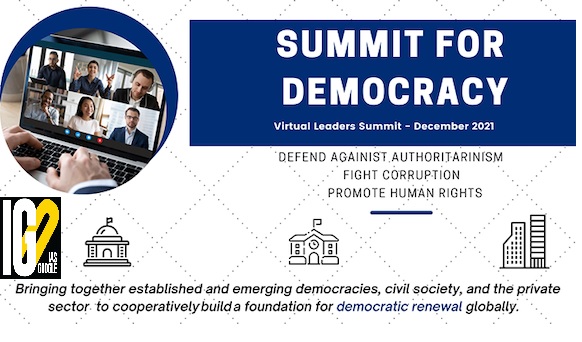



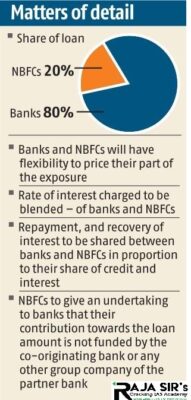



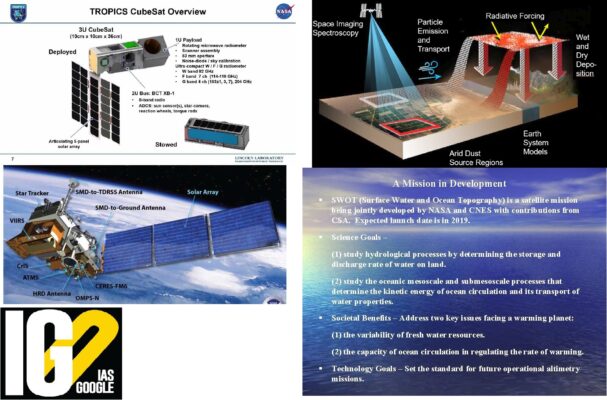
 Supersonic missile assisted torpedo system gets successfully launched from Wheeler Island in Odisha recently
Supersonic missile assisted torpedo system gets successfully launched from Wheeler Island in Odisha recently
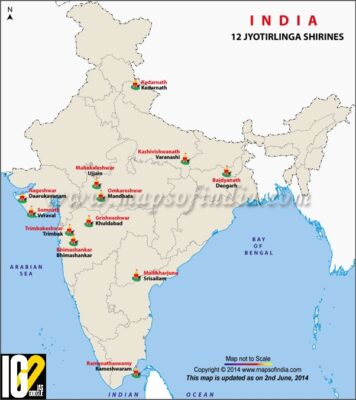
 Recently, Bharat Petroleum collaborates with Bhabha Atomic Research Centre for Green Hydrogen production.
Recently, Bharat Petroleum collaborates with Bhabha Atomic Research Centre for Green Hydrogen production.
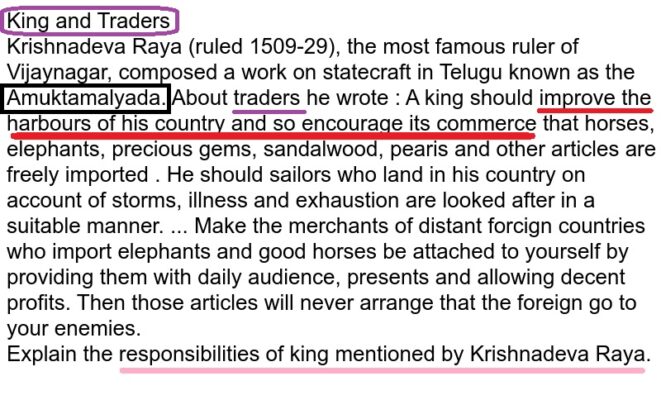 Amuktamalyada
Amuktamalyada
 Recently, second edition of ‘Animal Husbandry Startup Grand Challenge’ was launched.
Recently, second edition of ‘Animal Husbandry Startup Grand Challenge’ was launched.
 Ministry of power will soon set up a detailed action plan to take up India's renewable energy (RE) capacity to 500 GW by 2030 recently.
Ministry of power will soon set up a detailed action plan to take up India's renewable energy (RE) capacity to 500 GW by 2030 recently.

- Democracy is a government of the people, for the people, and by the people.
- The term ‘democracy’ comes from the Greek word demokratia which means “rule of the people”.
- It was coined from two words: demos that means “people” and kratos which refers to “power”.
- In a democracy the power rests with the people.
- India is recognized for having the largest democracy in the world.
- India achieved the status of being a democratic nation post its independence in 1947.
- The citizens of India were given the right to vote and to elect their leaders.
- Indian Constitution guarantees its citizens the right to vote irrespective of their caste, color, creed, religion, and gender.
- It has five democratic principles – sovereign, socialist, secular, democratic, and republic.
- It refers to a form of government wherein citizens take part in the administration of the government.
- Government policies are decided by the people themselves.
- Whole community forms legislature.
- The representatives elected by the people exercise the supreme power.
- Representatives of the winning party forms government and are a part of legislature.
- This type of democracy is known as representative democracy.
- It is of two kinds–parliamentary and presidential.
- The Indian Constitution provides representative parliamentary democracy in which the executive is responsible to the legislature for all its policies and actions.
- In a democratic nation, the citizen’s role is to take part in public life.
- The most common role of a citizen is to exercise its right to vote.
- To exercise this power, a citizen must be aware of the different political parties, their candidates, their propaganda, etc.
- Citizens have to make efforts to make the system of democracy responsible and responsive.
- The citizens must make the Parliamentarians, Members of State Legislature, and their representatives in Panchayati Raj and Municipal Institutions accountable for their actions.
- The Right to Information Act, 2005 has been enacted to enable citizens to play their role effectively.
- Every citizen should have a realization that they have many more obligations to fulfill other than voting.
- Democracy is a system where citizens have various freedoms but never absolute.
- It is based on the principle of “with rights comes obligations.”
- Illiteracy
- Illiteracy has been a challenge because both the education level of people and the socio-economic development of a nation play a vital role in a democratic nation.
- At the time of independence, the literacy rate of India was almost dismal, and the female literacy rate was negligible.
- Due to these conditions, citizens were not be able to play their part effectively and exercise their right to vote meaningfully.
- Poverty
- India inherited the state of poverty since the colonial rule of the Britishers.
- Till date, some people live below the poverty line in the country.
- Poverty in India still exists because of various reasons such as unemployment and under-employment.
- Gender Discrimination
- Although gender equality is a basic principle of democracy in India, it still exists on every small step.
- The Constitution guarantees equal treatment to all citizens, irrespective of their gender.
- It guarantees the Fundamental Rights, as well as Directive Principles of State Policy.
- Communalism
- Communalism is an ideology which states that society is divided into religious communities whose interests differ and at times even opposed to each other.
- Communalism is a setback to the Indian democracy as it acts as an offense to secularism.
- Regionalism
- India is a nation with diversities of religions, languages, tribes, cultures, and communities.
- Due to such diversities, imbalances occur in the development process and lead to regional disparities, the democracy of the country is suffering.
- Corruption
- Corruption is a major problem in India as it has its roots in every field be it land, health, education, property, industry, agriculture etc.
- It exists at all levels of politics, bureaucracy, government, and corporate.
- Casteism
- Casteism is a differentiation made between individuals based on birth.
- In India, the caste system originated on the arrival of Aryans and continues in some parts of the country.
- The system brought practices like untouchability which continues despite being banned.
- Due to this system, the lower caste people even today are deprived of basic education, social benefits, etc.
- Political Violence
- Violence is of various forms namely, communal, caste, political, etc.
- Whenever a political party loses elections, its party members begin engaging themselves in violence.
- It is a threat to the democracy as it leads to aggressive competition for political power and the victim is always the general public.

- It is a Centrally Sponsored Scheme.
- Launched- 2001
- Came into Existence- 1998 under Planning commission
- It has been restructured as North East Special Infrastructure Development Scheme (NESIDS) in 2017.
- Reason for restructuring: - To focus on projects related to infrastructure creation and to enhance tourism.
- Nodal Agency- The Department for Development of North-Eastern Region (DoNER)
- The North Eastern Region (NER) comprises of eight States- Arunachal Pradesh, Assam, Manipur, Meghalaya, Mizoram, Nagaland, Sikkim and Tripura
- Objective-
- To ensure speedy development of infrastructure in the North Eastern Region.
- To increase the flow of budget for new infrastructure projects.
- Funding- Central and State Government allocate the funds on 90:10 basis.
- Sectors Considered-
- Physical and social infrastructure sectors are considered.
- Funds from the Central Pool can be released for State sector as well as Central sector projects/schemes.

- Malnutrition is the biggest threat to children under five years in India.
- Undernourishment is worst in places like Uttar Pradesh, Bihar and Andhra Pradesh.
- The causes of undernutrition in children in this age group are rooted in socioeconomic determinants distributed unequally across the country.
- Stunting: Nine of the top 10 constituencies were from Uttar Pradesh, including the worst performer — Ghorawal (60.94 per cent).
- Underweight: Jharkhand, Maharashtra and Andhra Pradesh had three constituencies each in the top 10 list, and Karnataka had one.
- Jharkhand’s Khunti was the worst performer.
- All the top five constituencies in the ranking were scheduled caste or scheduled tribe.
- Wasting: Nine of the 10 constituencies with the highest proportion of wasted children were spread across Karnataka, Jharkhand and West Bengal.
- Anaemia: Andhra Pradesh had the highest prevalence with eight of the top 10 constituencies.
- No state fared badly in all four indicators. This shows the uneven distribution of undernourishment.
- The analysis can help in identifying areas with high malnutrition burden in areas where resources are scarce.
- The indicators can be used by the government to monitor malnutrition and eradication programmes such as National Nutrition Mission (or POSHAN Abhiyaan).
- It can help monitor assembly-wise burden of child malnutrition.
- The report recommended that the policy initiatives driven by assembly constituencies can be more precise with greater political accountability.

- Moral police are a category of vigilante groups which act to enforce a code of morality in India.
- The target of moral policing is any activity that is deemed to be immoral or against Indian culture.
- Orthodox societal mindset: Orthodox mindset views that women are weaker and security of them is their responsibility.
- Upbringing by parents: Indian parents try to inculcate morality to their children according to societal norms. The children, who later on in their lives, deliver those values in the society in the form of moral policing.
- Indian Cultural value: Some vigilante groups oppose the western ideas and claim that Indian culture is superior and it’s their responsibility to protect the Indian culture.
- Presence of social media: In present world social media is one of the biggest reasons that create enmity between different religion.
- Section 292 of the Indian Penal Code deals with sales and distribution of obscene books and other material.
- But police personnel use Section 292to file cases against film posters and advertisement hoardings that are deemed to be obscene.
- The Immoral traffic (prevention) act (PITA) was originally passed to prevent human trafficking.
- But it has been used by police to raid hotels if they suspect a sex racket being run there even without proper evidence, thus embarrassing legal couples and young people.
- Gender inequality: Moral policing promotes gender biasness which create problem to women work free environment.
- Affects Fundamental right: It violates fundamental right and showed cultural values are supreme then the democracy.
- Mob lynching: Lynching is an extrajudicial killing by a group. Moral policing promotes mob lynching.
- Honor Killing: Honor killings are one of the worst manifestations of moral policing which supposedly curtail western influences by infiltrating on Individual freedom.
- Reason for criticism: This will only benefit the private firm more by taking unfair advantage of a SBI which has extensive reach and expertise.

- Co-lending or co-origination is a set-up where banks and non-banks (NBFCs) enter into an arrangement for the joint contribution of credit for priority sector lending.
- It was formulated by Reserve Bank of India (RBI) in 2018.
- Aim: To improve the flow of credit to the unserved and underserved segment of the economy at an affordable cost.
- Under this arrangement, both banks and Non-Banking Financial Corporations (NBFCs) share the risk in a ratio of 80:20.
- It expands lending in priority sectors including rural areas, renewable energy and Micro Small and Medium Enterprises (MSMEs).
- In a Co-lending model, two lender firms come together to disburse loans.
- Here, NBFCS facilitate the origination and collection of housing loans while banks leverage their balance sheet strength to house the majority of the loan.
- Banks will lend to NBFCs, and NBFCs will pass it on to the priority sectors.
- NBFCs act as the single point of interface for the customers and a tripartite agreement is done between the customers, banks and NBFCs.
- The agreement should contain the features of the arrangement and the roles and responsibilities of NBFCs and banks.
- The ultimate borrower would be charged an all-inclusive interest rate.
- Upon maturity, the repayment or recovery of interest is shared by the bank and NBFC in proportion to their share of credit and interest.
- Ground-level executions
- Though Banks and NBFCs both are open for tie-ups, there are challenges in execution at ground level.
- Tech integrations:
- IT integration of systems is difficult as both banks and NBFCs operate on different systems, different underwriting processes and parameters.
- Preference for term loans:
- Most of the mid-sized well-rated NBFCs opt for term loans over entering into co-lending models
- It will ensure delivery of credit to the unserved and underserved, thereby addressing the credit gap.
- This is possible as banks have lower cost of funds and NBFCs have greater reach beyond tier-2 centres.
- It can be an opportunity for digital lending start-ups and mid-size NBFCs, to establish their strength of distribution with bank’s funds.
- It allows banks to expand their customer base as NBFCs have access in tier-3 and tier 4 cities.
- Tier 3 cities are those cities with a population between 20,000 to 49,999
- Tier 4 cities are those cities with a population between 10,000 to 19,999
- The model can fulfil the credit requirements of the priority sector segments.
- Banks can connect with the underserved farming segment of the country and further contribute towards the growth of India’s farm economy.
- Increased risk for the Banks:
- 80 % of the risk will be with the banks.
- NBFCs are required to retain at least a 20 % share of individual loans on their books.
- Limitations of the Bank:
- The terms of the agreement provide for the banks
- to either mandatorily take their share of the individual loans originated by the NBFCs on their books, or
- to retain the discretion to reject certain loans after due diligence prior to taking them on their books.
- Greater role for NBFC:
- The RBI guidelines provide for the NBFCs to be the single point of interface for customers.
- NBFC decides the borrower, while the banks fund the major chunk of the loan.
- NBFCs have more opportunities on the lending side through direct co-lending arrangements.
- This programme gives the largest coverage to the depositors in the world stretching up to 98 per cent of the people.
- Deposit insurance is a protection cover against losses accruing to bank deposits if a bank fails financially and has no money to pay its depositors and has to go in for liquidation.
- It is a measure implemented in many countries to protect bank depositors.
- It prevents bank runs as banks keep only a small amount of money at their premises.
- If too many people try to withdraw their money at the same time, it could cause banks to fail even if they were financially sound.
- Deposit insurance is regulated by Deposit Insurance and Credit Guarantee Corporation (DICGC), which is specialised division of Reserve Bank of India which is under the jurisdiction of Ministry of Finance.

- It is a wholly-owned subsidiary of the Reserve Bank of India, which is under the jurisdiction of Ministry of Finance.
- It was established under Deposit Insurance and Credit Guarantee Corporation Act, 1961.
- Aim: To provide deposit insurance that works as a protection cover for bank deposit holders when the bank fails to pay its depositors.
- Central, state, and urban co-operative banks, regional rural banks and local banks, are covered under DICGC, provided that the bank has opted for it.
- It insures all kinds of deposit accounts of a bank, such as savings, current, recurring, and fixed deposits up to a limit of Rs. 5 lakh per account holder per bank.
- If an individual's deposit amount exceeds Rs.5 lakh in a single bank, only Rs.5 lakh, including the principal and interest, will be paid by DICGC if the bank becomes bankrupt.
- Deposits of foreign Governments
- Deposits of Central/State Governments
- Inter-bank deposits
- Deposits of the State Land Development Banks with the State co-operative bank
- Any amount due on account of any deposit received outside India
- Amount which has been specifically exempted by the corporation with the previous approval of Reserve Bank of India.
- Deposits of state or Central governments.
- Deposits from foreign governments.
- State land development banks depositing with the state co-operative bank.
- Inter-bank deposits.
- Funds that are due on account of India and deposits received outside India.
- Funds exempted by the corporation with the previous approval from RBI.
- To cancel the registration of an insured bank if it fails to pay the premium for three consecutive half-year periods.
- To restore the registration, if the bank makes a request and pays all the amounts due by way of premium from the date of default together with interest.

- Location- Alipurduar district of West Bengal.
- Legal Status-
- It was declared as 15thtiger reserve in 1983.
- It got the status of National Park in 1992.
- Climatic Condition: It is classified as the Moist Tropical Forest.
- The Terai Eco-System is a part of the reserve.
- The main trees are sal, champa, gamhar, simul and chikrasi.
- Major species-Royal Bengal Tiger, Leopard, Elephant, Hyaena, Oriental Pied Hornbill.
- Major rivers: Sankosh, Raidak, Jayanti, Churnia, Turturi, Phashkhawa, Dima and Nonani.
- Buxa-Titi (via Torsa):
- It connects Rangamati Reserve Forest area of Buxa Tiger Reserve with Titi Reserve Forest.
- Buxa-Titi (via Beech and Bharnabari Tea estate):
- It connects Bharnabari Reserve Forest of Buxa Tiger Reserve and Titi Reserve Forest situated south of Dalsingpara tea estate by passing through Bharnabari tea estate and Beech tea-estate.
- Nimati-Chilapata (Buxa-Chilapata):
- It maintains elephant movement between Buxa Tiger Reserve and Jaldapara Wildlife Sanctuary.
- Buxa-Ripu at Sankosh (Sankosh):
- It is a contiguous forest that connects Buxa Tiger Reserve of West Bengal with the Ripu Reserve Forest of Kochugaon Forest Division, Assam.
- Landmarks-
- Manas National Parklies on east of Buxa Tiger Reserve.
- It is an international corridor for Asian elephant that migrates between India and Bhutan.
- Manas National Parklies on east of Buxa Tiger Reserve.
- Plastic production accounted for 96 per cent of the particulate matter health footprint.
- Impact of plastic on climate and health is greater due to the increased use of coal.
- The global carbon footprint of plastic doubled since 1995, reaching two billion GtCO2-tonnes of carbon dioxide equivalent (CO2e) in 2015.
- China, Indonesia and South Africa, were among the major drivers of the increasing carbon footprint from plastics.
- High-income regions, such as the European Union and the United States, contributed substantially to the increasing global carbon footprint of plastics.
- Nearly 75 per cent of particulate matter-related health impacts were caused in China, India, Indonesia and other Asia.

- The manufacture, import, stocking, distribution, sale and use of single-use plastic commodities shall be prohibited with effect from the 1st July, 2022.
- The thickness of plastic carry bags has been increased from
- fifty microns to seventy-five microns with effect from 30thseptember 2021.
- 120 microns with effect from the 31st December, 2022.
- The ban will not apply to commodities made of compostable plastic.
- The plastic packaging waste, which is not covered under the phase out of identified single use plastic items, shall be collected and managed in an environmentally sustainable way through the Extended Producer Responsibility of the Producer, importer and Brand owner (PIBO), as per Plastic Waste Management Rules, 2016.
- Saudi Arabia issued a decree banning the Tablighi Jamaat and labelled it as a gate of terrorism.
- The decision has drawn criticism from the traditionalist movement’s ideological parent institution, Darul Uloom Deoband, Uttar Pradesh.
- Darul Uloom Deoband is an Islamic seminary.
- It was founded by freedom fighter and Islamic scholar Muhammad Qasim Nanautviand his colleagues.
- In 2013, Kazakhstan banned the Tablighi Jamaat and designated it as extremist.
- The movement is also prohibited in countries including Iran, Russia, Tajikistan, Turkmenistan and Uzbekistan.
- Tablighi Jamaat is a transnational Sunni Islamic missionary movement.
- It is the largest Islamic missionary movement today.
- It can be traced back to the Deobandi tradition, which originated from the Darul Uloom madrasa in Deoband.
- It focuses on exhorting Muslims and encouraging fellow members to return to practising their religion as per the Islamic prophet Muhammad.
- It focuses particularly in matters of ritual, dress, and personal behaviour.
- It was launched in Mewat in 1927by the Islamic scholar and teacher Maulana Muhammad Ilyas.
- He coined the slogan “Oh Muslims! Become Muslims”.
- Tablighi Jamaat tends to blur the boundaries of gender roles and both genders share a common behavioural model and their commitment to tabligh.
- It is an article of faith in which the Tabligh accepts that there is no God but Allah and that Prophet Muhammad is his messenger.
- Achieve certainty so that one can get spiritual elevation, piety and a life free from the ills of the material world.
- One has to achieve enough wisdom to be able to differentiate between what is permissible-impermissible, purity-impurity, legitimacy-illegitimacy in all aspects of his/her life.
- Treat fellow Muslims with honour and deference.
- Reforming one's life in supplication to God by performing every human action for the sake of GOD and toward the goal of self-transformation.
- The sparing of time to live a life based on faith and learning its virtues, following in the footsteps of Muhammad.
- There is no defined structure.
- Originally, it used to be headed by the Ameer (now abolished).
- He who would preside over the shura(council), the core of the organisation, and deal with important matters including international congregations known as Aalmi Ijtama.
- After the death of third Ameer, the post was abolished, and Aalmi Shura(international advisory council) was appointed.
- He was born on 23 January 1897 in Cuttack (today the state of Odisha in India).
- He passed the Indian Civil Services examination securing fourth position but resigned from the service in 1921.
- His political guru was Chittaranjan Das.
- He became mayor of Calcutta in 1923.
- He met Hitler under the pseudo name, Orlando Mazzotta.
- With the help of Hitler, the ‘Freedom Army’(Mukti Sena) was formed which consisted of all the prisoners of war of Indian origin captured by Germany and Italy.
- He came to be called ‘Netaji’ by the people of Germany.
- He gave the famous slogan, ‘Jai Hind’ from the Free India Centre, Germany.
- The idea of creating an army out of the Indian prisoners of war (POWs) was originally that of Mohan Singh, an Indian army officer.
- The INA got a boost with the outbreak of the Quit India Movement in India.
- The second phase began with the arrival of Subhash Bose in Singapore.
- On October 21, 1943, Subhash Bose formed the Provisional Government for Free India at Singapore
- C.Chatterjee (Finance portfolio),
- A. Aiyar(Broadcasting),
- Lakshmi Swaminathan(Women Department).
- The famous slogan “Give me blood, I will give you freedom” was given in Malaya.
- On August 15, 1945 the surrender of Japan in the Second World War took place and with this the INA also surrendered.
- Gandhi and Bose differed in ideology
- For Gandhi non-violent means to any end were non-negotiable
- In Bose's thought, all means were acceptable in the service of anti-colonial ends.
- In 1938 Bose had become a leader of national stature and agreed to accept nomination as Congress President.
- He stood for unqualified Swaraj (self-governance), including the use of force against the British.
- He believed that the Bhagavad Gita was a great source of inspiration for the struggle against the British.
- His preference was "a synthesis of what modern Europe calls socialism and fascism".

- The four NASA science missions include TROPICS, EMIT, NOAA’s JPSS-2 and SWOT.
- NASA will use six satellites in this mission to observe tropical cyclones.
- These satellites will travel in pairs and in three different orbits providing microwave observations of a storm's precipitation, temperature, and humidity as quickly as every 50 minutes.
- NASA will use satellites to learn where dust originates and how it affects the planet.
- NASA plans to use an imaging spectrometer that measures visible and infrared light reflecting from surfaces below This mission will take place for one year and it will be installed on the ISS.
- The National Oceanic and Atmospheric Administration and NASA’s JPSS satellites that currently orbit the Earth provide data that help in forecasting extreme storms.
- These satellites also provide information about floods, wildfires, volcanoes, smog, dust storms, and sea ice.
- Aim: To collect data from the Earth’s surface water bodies like the oceans, lakes and rivers, and how much climate change affects these freshwater bodies.
- It will also provide data on the ocean’s ability to absorb excess heat and greenhouse gases like carbon dioxide.
 Supersonic missile assisted torpedo system gets successfully launched from Wheeler Island in Odisha recently
Supersonic missile assisted torpedo system gets successfully launched from Wheeler Island in Odisha recently
- It was developed by Defence Research and Development Organisation (DRDO).
- Objective: To enhance anti-submarine warfare capability far beyond the conventional range of the torpedo.
- It is a canister-based missile system.
- It consists of advanced technologies viz. two stage solid propulsion, electro-mechanical actuators and precision inertial navigation.

- The prominent temples, in Maharashtra, rich in history and traditions include Triambakeshwar, Bhimashankar, Grishneswar, Aundha Nagnath, and, Parali Vaijnath.
- Triambakeshwar temple: It is located in the Southwest of Nashik; it is also one of the four places where the famous Kumbh Mela is held every year.
- Bhimashankar temple: It is located in the Sahyadri mountain ranges of Maharashtra in Pune.
- Grishneswar Jyotirlingam temple: It is located in Aurangabad and dates back to the 11th to 12th century CE.
- The Aundha Nagnath: It is located in the Hingoli district of Maharashtra.
- Also, it is considered to be the first or 'Adhya' linga installed by the Pandavas.
- Parali Vaijnath: It is also known as Vaidyanath was renovated by Rani Ahilyabai Holkar.
- Aim-
- To address global water woes through innovations as part of the Indo-Danish Bilateral Green Strategic partnership.
- To improve sustainable water supply in India and at the global level.
- To identify innovative & next-gen solutions.
- To solve proposed challenges in collaboration with corporate and public partners.
- Concerned area of the challenge-
- Digital water management solutions
- Solutions for monitoring and prevention of leakage in city water supply
- Wastewater management across Rural/Agri belts and Urban settlements
- Rainwater harvesting in Rural and urban settlements
- Safe and sustained drinking water
- The winners will represent India at the International Water Congress 2022.
 Recently, Bharat Petroleum collaborates with Bhabha Atomic Research Centre for Green Hydrogen production.
Recently, Bharat Petroleum collaborates with Bhabha Atomic Research Centre for Green Hydrogen production.
- Green hydrogen is hydrogen that is produced using renewable energy through electrolysis.
- This method uses an electrical current to separate hydrogen from oxygen in water.
- Refineries use large quantities of Hydrogen for de-sulfurization to make petrol, diesel and other chemicals.
- Currently, Hydrogen is made at the Refinery via Steam Reforming of Natural gas. However, this results in high CO2 emission.
- Therefore, Refiners are setting up large scale electrolysers to produce Green Hydrogen from water and thereby decarbonize Hydrogen production.
 Amuktamalyada
Amuktamalyada
- It is a Telugu epic poem composed by Krishnadevaraya in the early 16th century.
- Amuktamalyada describes the story of wedding of the Hindu Lord Ranganayaka an avatar of Lord Vishnu and Goda Devi also known as Andal.
- It narrates several episodes that are relevant in the context of the propagation of the Vaishnava theology.
- He was the third ruler of Tuluva dynasty who ruled over Vijayanagar from 1509-1529.
- He earned the titles of 'Kannada Rajya Rama Ramana’, 'Andhra Bhoja' and 'Mooru Rayara Ganda'.
- Portuguese travellers Domingo Paes and Fernao Nuniz visited the Vijayanagara Empire during his reign.
- Literary work: Jambavati Kalyana, Madalasa Charita, Rasamanjari and Satyavadu Parinaya.
 Recently, second edition of ‘Animal Husbandry Startup Grand Challenge’ was launched.
Recently, second edition of ‘Animal Husbandry Startup Grand Challenge’ was launched.
- The Animal Husbandry Start-up Grand Challenge was launched by Invest India.
- Aim: To scout for innovative and commercially viable solutions to address problems faced by the animal husbandry and dairy sector.
- The six challenges faced by the diary sector are:
- Value added products
- Eliminate Milk adulteration
- Breed improvement and animal nutrition
- E-commerce solutions
- Product traceability
 Ministry of power will soon set up a detailed action plan to take up India's renewable energy (RE) capacity to 500 GW by 2030 recently.
Ministry of power will soon set up a detailed action plan to take up India's renewable energy (RE) capacity to 500 GW by 2030 recently.
- India's announced to achieve 500-GW of its installed capacity through non-fossil fuels and 50% of its energy requirement from renewables by 2030, at COP 26 climate conference in Glasgow.
- India's current capacity is about 101 GW in 2021, another 400-GW of RE will be added by 2030.
- The action plan will assess issues of transmission, types of technology to be used, the energy mix for the 500-GW target and storage requirements.
- It will look into the regulatory framework required for the scale-up of RE and to draw foreign investment into the sector.









 Latest News
Latest News General Studies
General Studies